4 Places to Shoot Great Sand Dunes National Park Photos

Ripples in the sand at Great Sand Dunes National Park & Preserve (Photo: Andre Costantini)
When you first drive to Great Sand Dunes National Park & Preserve on straight, flat and empty highways in southern Colorado, it’s hard to understand their scale. It’s the kind of natural wonder you just have to see up close, the kind that confuses and overwhelms you when you try to understand it. But don’t be daunted—we asked professional Tamron photographer André Costantini, one of the instructors of our online Night Sky Photography course (relaunching soon), where to approach the park for the best Great Sand Dunes photos. Here are his recommendations.
1. The Great Sand Dunes Visitor Center
It may sound like a lazy way to shoot, but this visitor center is perfectly positioned to give you a shot that shows the full breadth of the dune field. Walk out to the back patio of the building to shoot with the dunes framed by the Sangre de Cristo Mountains. Go here at sunrise, Costantini suggests, and wander along the trails alongside the center. “It’s amazing that you can stand literally right beyond the visitor center before you even get to the dunes, and get great photos with a long lens,” Costantini says.
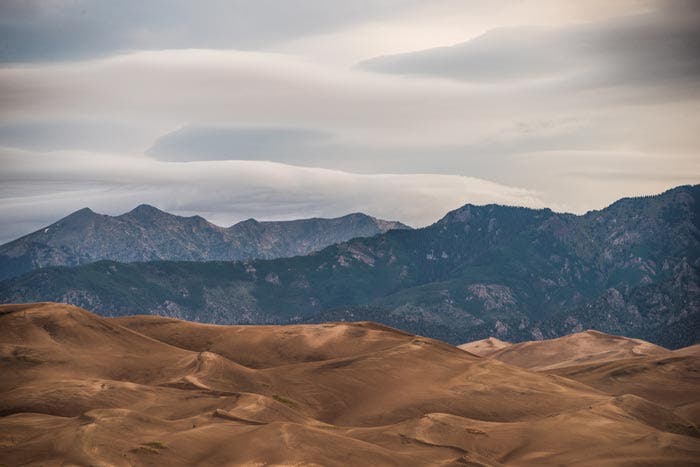
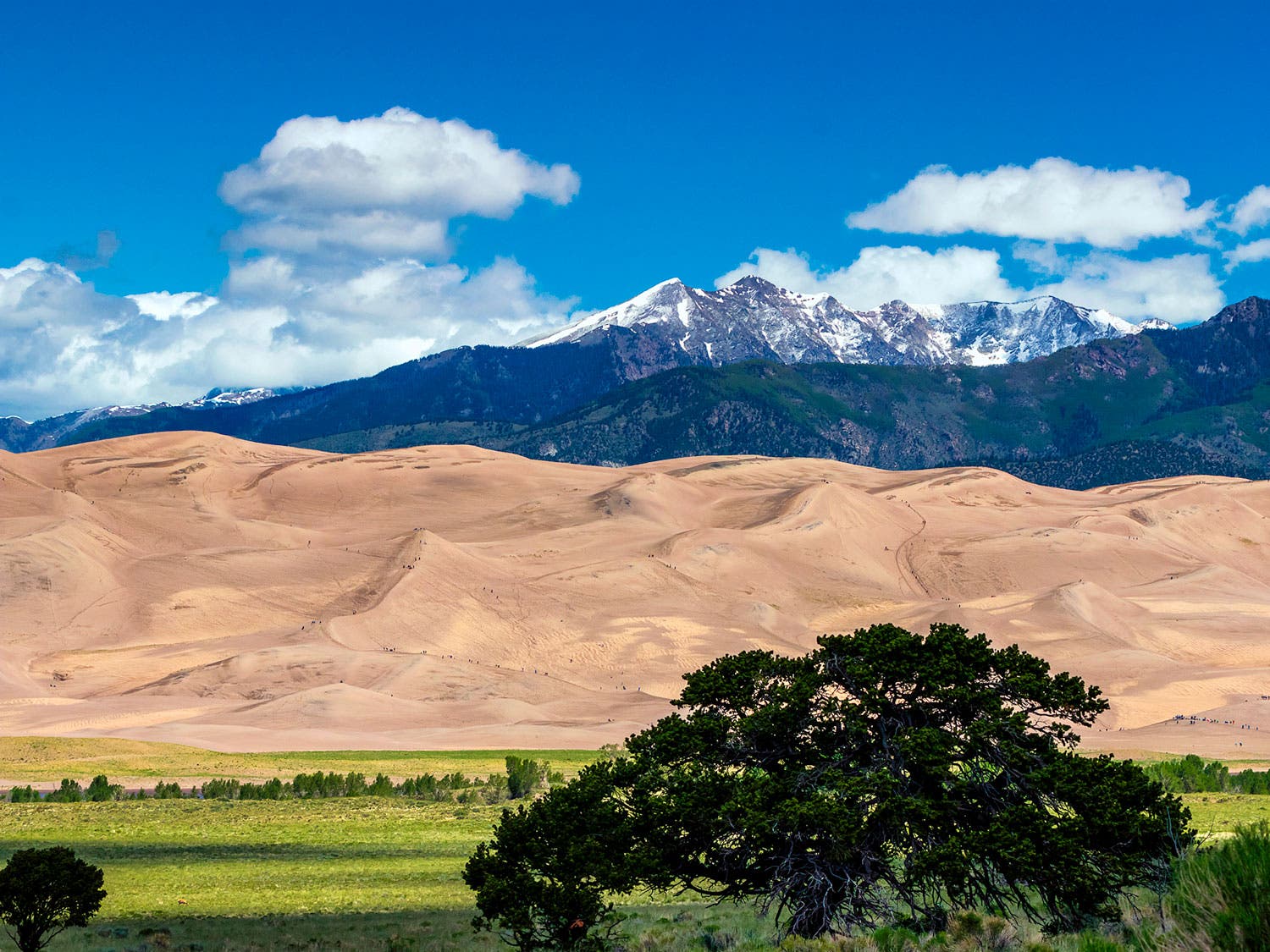
2. Medano Pass Primitive Road
If you have a high-clearance car with four-wheel drive, take Medano Pass Primitive Road for a shorter hike to the center of the dunes. Unlike the main day-use area where you’ll find families playing in the sand, you’ll find far fewer people (if any at all) when you enter the dune field from this angle. “You’ll find clean dunes without footprints,” Costantini says. “It’s a less-traveled way to get into the dunes, and you can get completely surrounded by them much quicker than if you went in the main way.”
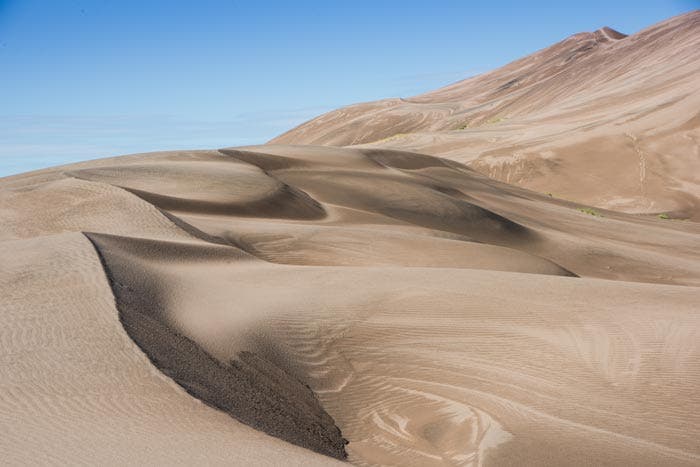
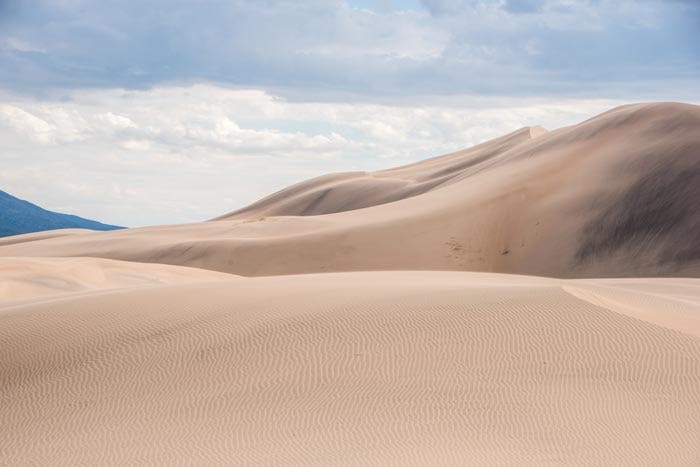
3. The Top of High Dune
To see to the other side of the dunes and out to the mountains beyond, climb to the top of High Dune. It’ll take you some time—two hours round-trip—but it’s worth it. “The beauty of the park, in a way, is the perspective from the top,” Costantini says. Avoid hiking up here in late afternoon, when storms often roll in and winds drive sand into you and your camera. Look for shadows, Costantini says. The contrast will put the scale of the dunes in perspective.
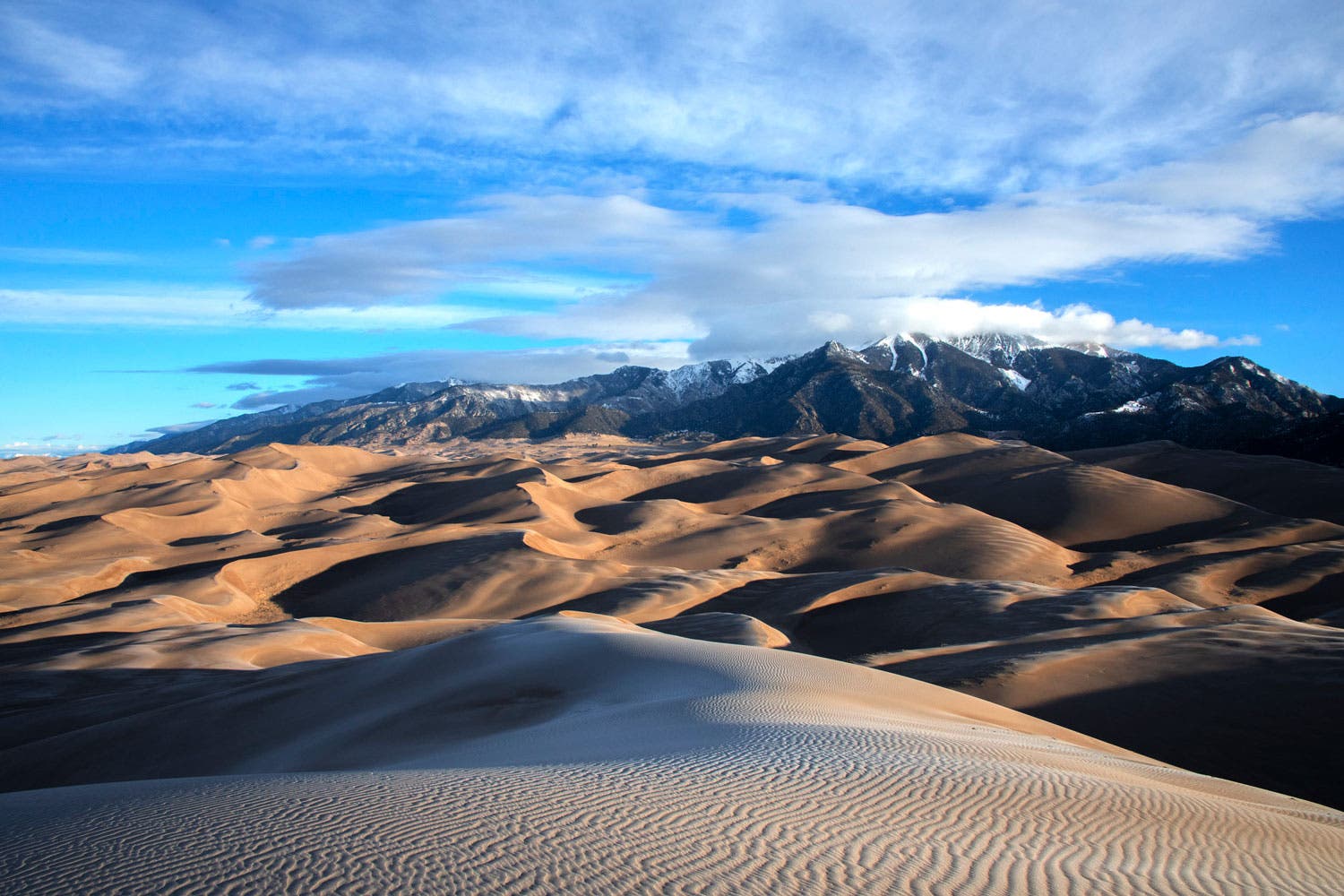
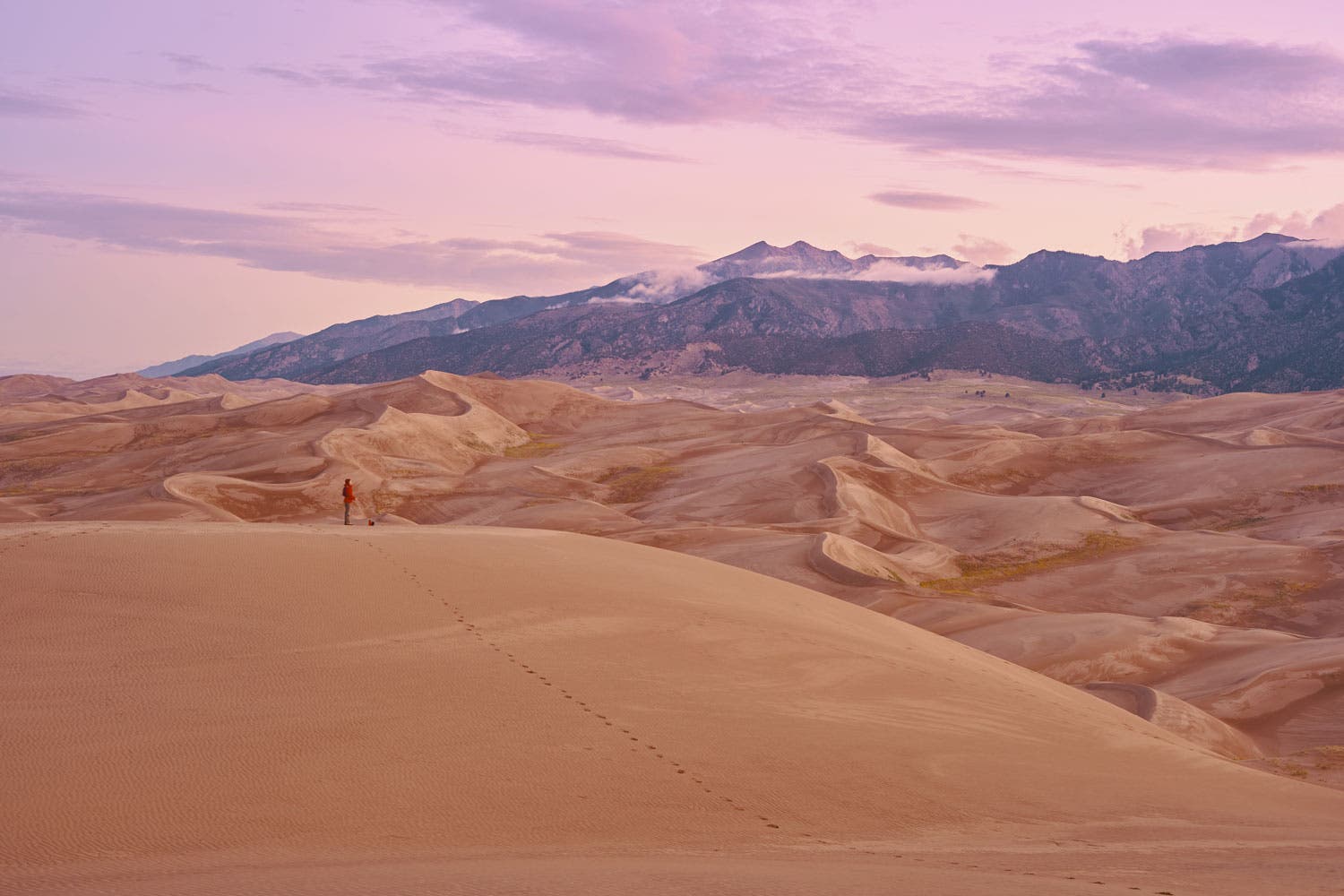
4. On the Ridgelines
Even if you’re here for the landscape, don’t neglect the people. Photographing people hiking along the sharp ridgelines makes for interesting photos, Costantini says—especially when they look so small against the environment. Bring plastic bags or a weather-sealed camera case if you’re shooting from within the dune field, and consider wearing long pants or bringing a scarf, too. You’ll thank us later.
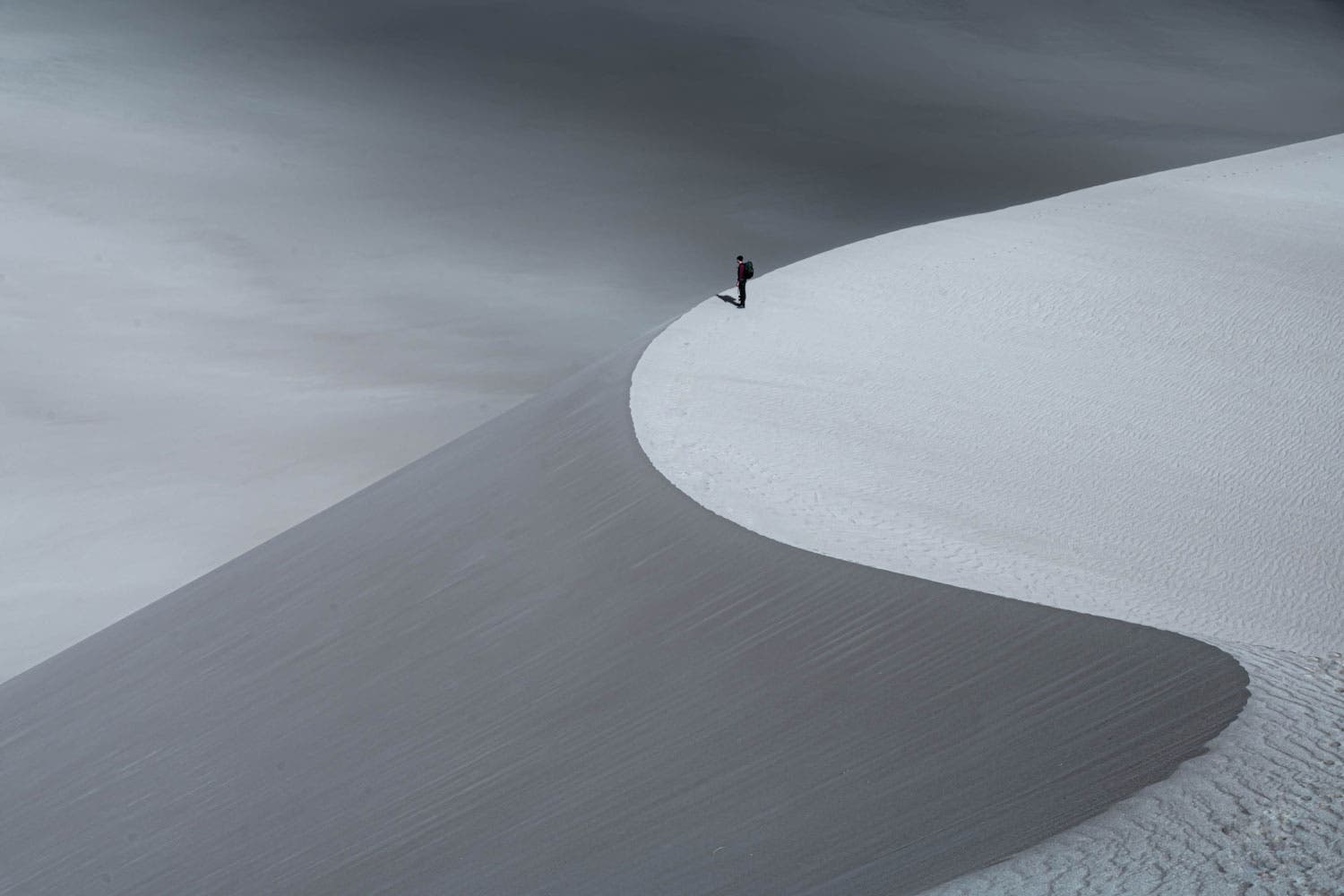
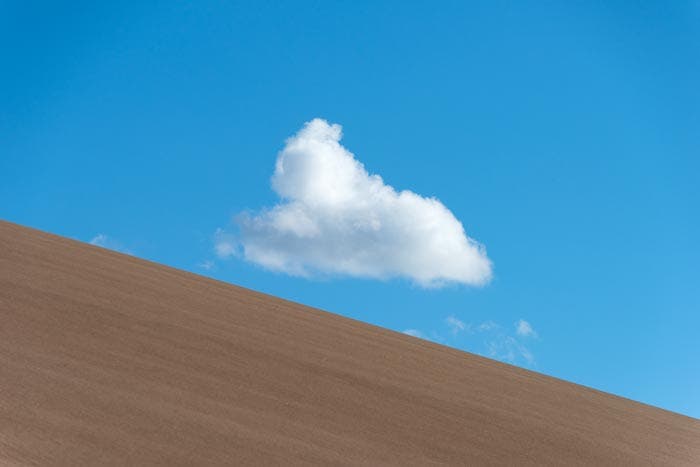
André Costantini has been a professional photographer for more than two decades. His clients include American Repertory Theatre, Constellation Center, Tamron and Discovery Channel. He regularly teaches workshops on filmmaking and photography.